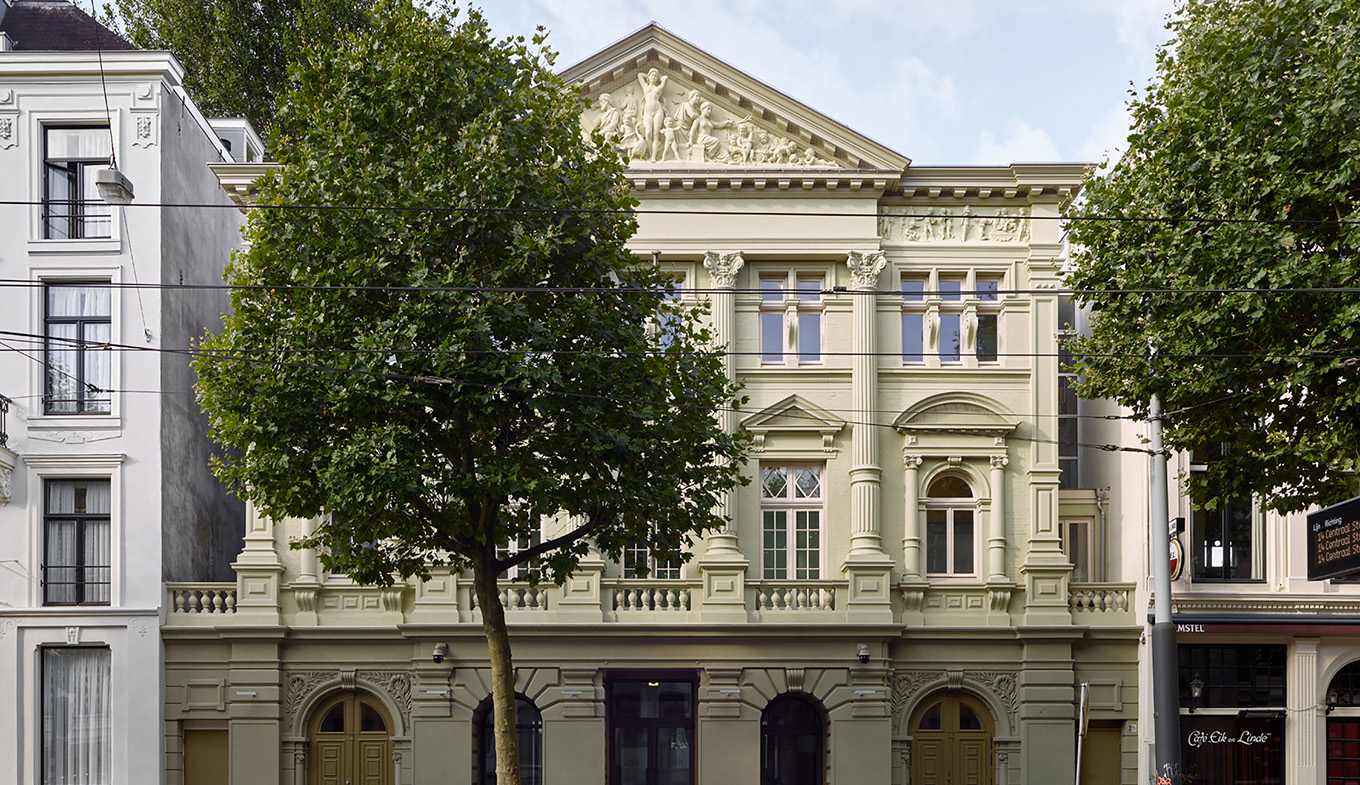
National Holocaust Museum to open - Jan. 15, 2024
The National Holocaust Museum will open to the public on 11 March 2024. It is the first and only museum to relate the history of the persecution of the Jews of the entire Netherlands. Including the day-to-day life of Jews on the eve of the Second World War, the liberation as Jews experienced it, and how the Holocaust has been treated in our national culture of remembrance: all this is examined in the museum. The National Holocaust Museum opens in the former Hervormde Kweekschool on Amsterdam’s Plantage Middenlaan, across the road from the renovated memorial site, Hollandsche Schouwburg. Museum visitors will learn about the stages in which the planned mass murder was achieved while across the road there is an opportunity to remember the victims at a historic location. For schools, the museum offers tailored education programmes.
Accessible from 11 March 2024
The displays of around 2,500 objects, rediscovered photos and films, audio recordings, documents and installations in this museum tell the history of the Holocaust in the Netherlands and in the concentration and extermination camps of Nazi-occupied Europe. A medallion of a Jewish girl on the run. A cloak in which a resister disguised as Sinterklaas distributed underground documents. A brooch found buried outside the gas chamber at Sobibor. Objects from dozens of museum collections in the Netherlands and abroad. The National Holocaust Museum is also showing objects recently given by survivors and their heirs which have never been shown in public before.
Wallpaper of anti-Jewish measures
The gallery walls are covered from top to bottom with the texts of anti-Jewish measures. The Nazis began imposing these in May 1940 to discriminate against Jews, to segregate, rob and deport them. These were issued as ordinances and regulations to create a veneer of legality. This enabled the Nazis to force Jews to register (1941) and to wear a yellow star (1942). These walls provide as complete an overview of the anti-Jewish regulations in the Netherlands as possible.
Forget-me-nots
A card frame with three passport photos of unknown victims and their appeal ‘Don’t forget us!’ from the Jewish Museum collection inspired our Forget-me-nots: nineteen uniquely designed showcases, across the museum, each highlighting one person’s life. With a personal memento, a portrait photo or video, a brief text, an audio fragment, each Forget-me-not brings the life of a Holocaust victim into sharp focus.
Out of the shadows
After the war, around 30,000 of the Jews from the Netherlands remained alive, a fraction of the prewar community. In the last two exhibition galleries the museum tells how they endeavoured to restore their dignity and pick up the threads of their life. Here, for example, is the original manuscript that Eddy de Wind wrote directly after the liberation of Auschwitz. In video interviews, young Jews, Roma and Sinti tell how their family’s history of persecution continues to impact on their life today.
Hollandsche Schouwburg memorial
After the war, Jews remembered the Holocaust, the Shoah, within the community. It was only later that the persecution of the Jews received a place in the nation’s memorial culture. In the 1960s, the practice developed of honouring the victims of the Holocaust on 4 May, national Remembrance Day, and in 1962 Hollandsche Schouwburg was repurposed as a memorial site for the tens of thousands of Jews who were deported from that building. Over the last two years, Hollandsche Schouwburg has been completely renovated and reopens this March together with the National Holocaust Museum. A ten-metre wide introductory film has been installed telling the history of the building, along with a model of the former theatre and a new artwork by Gabriel Lester. Outside, along the walls of the former auditorium, are forty teardrop-shaped lightboxes. These present portrait photos and audio recordings of victim’s testimonies and memories of survivors. The upper floors contain a knowledge resource centre and education studios.
School visits
Recent research has shown that knowledge of the Holocaust is declining among younger generations. To combat this, the National Holocaust Museum offers tailored education programmes for children in the upper years of junior school, high school and technical school. The museum’s various education studios will shortly be able to accommodate nine school classes a day.